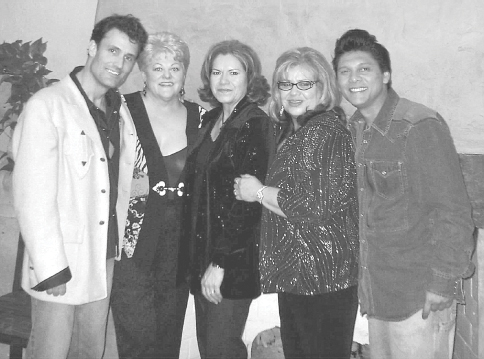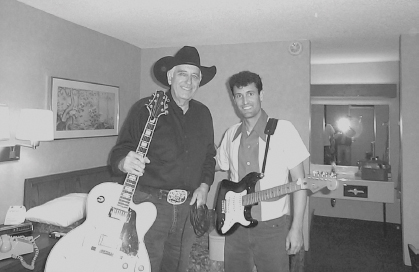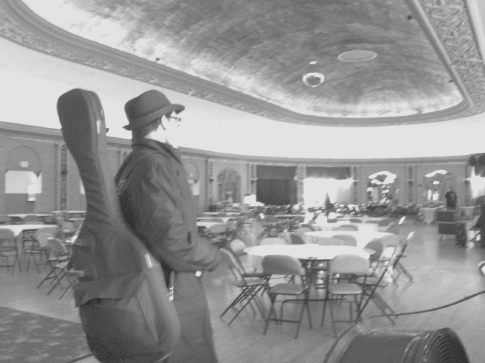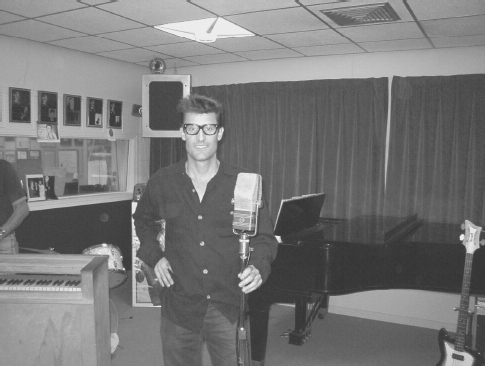Chapter 34
Hey, Buddy . . . We’ll see you on down the line
In Rock & Roll terms, Buddy’s body of work is not that large. He was only in the professional limelight for about eighteen months. Considering that limited length of time, his work can also be considered rather voluminous. Buddy’s songs are extensively covered by other artists. Some artists who have performed his songs include The Beatles, the Rolling Stones, Linda Ronstadt, and James Taylor, just to name a few. Don McLean’s “American Pie” is replete with Buddy connections, and of course “Hey, Buddy,” John Mueller’s personal tribute, is all about the legend. Buddy’s songs have been featured or used in movies and video games. The Buddy Holly Center in Lubbock is dedicated to his short but intense life. A statue and a street named after him and another after The Crickets also graces his hometown. The Buddy Holly Story is the name of both a movie and an ongoing Broadway-style musical production that plays worldwide. Buddy and his music live on. If you are aware of him and pay any attention at all, Buddy Holly is everywhere.
Celebrities from Sir Paul McCartney to Graham Nash, Bobby Vee and countless others admit that Buddy deeply and profoundly influenced and impacted their lives and their music. I’m not a celebrity and certainly not distinguished in any meaningful way, but my name can also be added to that (growing) list.

Left to right: John Mueller, Donna Ludwig (Ritchie Valens wrote and named his famous song “Donna” after her), Ritchie’s sisters Connie and Irma Valenzuela (maiden name used for both), and Ray Anthony, who portrays Ritchie on stage with John. John Mueller
Despite all of his accomplishments and the numerous tributes paid to the young man from Lubbock, what strikes me is the simple fact that Buddy grew up like me, and maybe like you, too. I have spent the better part of the last year talking to people about Buddy, and a common thread stands out: people everywhere did, and still do, relate to Buddy. Not Buddy the legend or Buddy the songwriter, but Buddy the young man from Lubbock. He reminds us of the kid next door or even more intimately, he reminds us of ourselves.
American kids idolized and adored The Beatles, but did they ever really relate to John, Paul, George, or Ringo in a personal and intimate way? Did Paul remind anyone of their next-door neighbor? Buddy was from small town America. He attended church. He was a Cub Scout. He stole trash can lids from his neighbors and stacked them at the end of the street because he thought it was funny. He was . . . typical. His report cards don’t reflect genius any more than most of ours did. He grew up in a very modest ranch-style home in a neighborhood a lot like mine and maybe a lot like yours. Buddy Holly could have been Ron McIntosh, Jeff Frederickson, Dan Cote, or Greg Kunde, the young musicians I grew up with . . . or even Gary Moore. The more I learned, the more I realized I am drawn to Buddy not because of his extraordinary accomplishments, but because he was an ordinary kid who made it big but never forgot who he was and where he was from.

Grammy winner Tommy Allsup (left), Buddy’s guitarist on the Winter Dance Party tour in 1959, and John Mueller (right) in a Best Western in Tennessee in 2000. Tommy was originally scheduled to make the flight with Buddy to Fargo, North Dakota, but a coin flip with Ritchie Valens in the back of the Suf Ballroom determined otherwise. John Mueller
So Buddy Holly raves on in the minds and hearts of his fans, young and old, all over the globe. Unlike those who followed in his musical footsteps in the Rock & Roll tsunami that blew in after his death, Buddy didn’t die of a drug overdose. He didn’t throw up and choke on his own vomit in someone’s backseat. He wasn’t killed while drunk behind the wheel of an Italian sports car, and he didn’t take his own life. Buddy never advocated free sex or drugs. But he was without question an inventor and pioneer of Rock & Roll. Buddy died aboard a plane that he chartered in an attempt to get to his destination with enough time to do his laundry. Buddy was out of clean socks and underwear.

A fan letter written to John Mueller (right) from 7-year-old Greta, with a drawing by her little sister.
John Mueller
Buddy Holly never grew old. He is as we knew him the last time we saw him. At the pinnacle of his career and popularity, he is unchangeably locked in love with his new bride and looking forward to building his recording studio and making a tremendous impact with his music.
Ask any Buddy Holly fan what comes to mind when he or she hears his name, and the answer is always the name of a song, THE black glasses, or the day the music died. None of these are the first thing that leap into my mind.
I think of John Mueller and his moving tribute to a man he never met but who he knows so intimately that his every move causes Buddy’s fans, friends, and family to feel as though Buddy is alive and onstage. I know in my heart and soul that Buddy approves of and appreciates John’s words, the music, and the sentiment.
I think about how Buddy’s first thought of what to do with his first royalty check was not to buy a car or go on vacation, but to use the money to purchase new pews for his church in Lubbock, Texas.
I think about my day in an Iowa cornfield, ankle-deep in mud, dancing and crying for joy while feeling a real connection with someone I have never met. It was unlike anything I have ever experienced.
I think of Don McLean’s question in “American Pie.”
I think about how my pursuit of Buddy Holly, my new buddy John, and Tim’s and Jim’s relentless mission to help me discover the music I missed and understand the actions of my generation have forever changed the way I look at music.
McLean asks, “Do you believe in Rock & Roll?”
I now answer, “Yes. Yes I do.”
But above all, I think of a little brown-eyed girl in a cotton summer dress holding her father’s hand with one of her own while using the other to shade her eyes from the Iowa sun that sparkles through her blonde hair. She is forever looking up at the planes high overhead. Her thoughts are not of death or tragedy, but of a handsome young Texas gentleman sporting sunglasses and tuning his guitar while sitting on a freezer in a ballroom kitchen in Waterloo, Iowa.

John Mueller enters the original Eagles Ballroom (now called Madrigrano’s Marina Shores) in Kenosha, Wisconsin, one of the few remaining original ballrooms from the 1959 Winter Dance Party tour. The photo was snapped by John’s drummer Mark Micklethwaite. John Mueller
My journey has come to its inevitable end. My mother-in-law introduced me to the late, great Buddy Holly through my new buddy John Mueller and his timeless song. Because of this pursuit, I discovered an entire decade of music I had ignored. My evening at the Winter Dance Party triggered this journey. I have found a part of me I did not know existed.
I hear the melody of the chorus of “Hey, Buddy” in my head and feel the words in my heart.

John Mueller inside Norman Petty’s famous studio in Clovis, New Mexico, where much of the video for “Hey, Buddy” was shot. John Mueller
Hey, Buddy . . . Rave On and sing us a song
Baby, won’t you come out tonight
We’re all looking for someone to love down here
You help us make it through these blue days and black nights
May God bless and keep you, Buddy. Thank you for your music, for the excitement, and for the enthusiasm you still generate. And thank you for the man you remain, frozen in time, forever twenty-two, in love with your wife.
Rave On.





